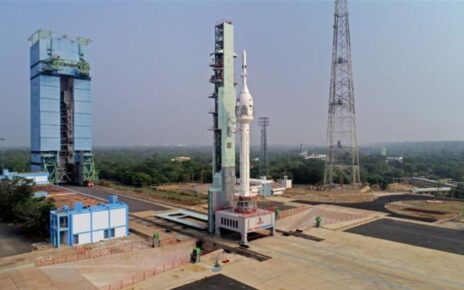The National Aeronautics and Space Administration (NASA) is planning a mission to land the first woman and the next man on the Moon by 2024.
The US space agency on Monday detailed the next steps under its Artemis programme for the Moon including the latest Phase 1 plans to land the first woman and the next man on the surface of the Moon in 2024.
“In its formal plan, NASA captures Artemis progress to date, identifying the key science, technology and human missions, as well as the commercial and international partnerships that will ensure we continue to lead in exploration and achieve our ambitious goal to land astronauts on the Moon,” NASA said in a release.
NASA Administrator Jim Bridenstine said, “We’re going back to the Moon for scientific discovery, economic benefits, and inspiration for a new a generation of explorers. As we build up a sustainable presence, we’re also building momentum toward those first human steps on the Red Planet.”
“The science that we would be doing is really very different than anything we’ve done before,” said Bridenstine, adding, “We have to remember during the Apollo era, we thought the moon was bone dry. Now we know that there’s lots of water ice and we know that it’s at the South Pole.”
The estimated the cost of this mission deadline is $28 billion as per the report. Out of this budget, $16 billion will be spent on building a lunar landing module, for which three different projects are currently competing
NASA’s Orion vessel
The lander will carry the two astronauts in NASA’s Orion vessel. The projects are being developed by Amazon CEO Jeff Bezos’ Blue Origin founded in partnership with Lockheed Martin, Northrop Grumman and Draper. The remaining two projects are by Elon Musk’s SpaceX and a company called Dynetics.
NASA will conduct a series of tests this fall for its Orion spacecraft. The first flight of Artemis I will be unmanned and is scheduled for November 2021.
The agency’s powerful new rocket, the Space Launch System (SLS), and the Orion spacecraft are closer than ever to their first integrated launch. The spacecraft is complete while the core stage and its attached four engines are undergoing a final series of tests that will culminate in a critical hot fire test this fall.
Following a successful hot fire test, the core stage will be shipped to the agency’s Kennedy Space Centre in Florida for integration with the spacecraft. NASA will launch an SLS and an Orion together on two flight tests around the Moon to check performance, life support, and communication capabilities. The first mission – known as Artemis I – is on track for 2021 without astronauts, and Artemis II will fly with crew in 2023.
In the Phase 1 plan, NASA notes additional details about conducting a new test during the Artemis II mission – a proximity operations demonstration. Shortly after Orion separates from the interim cryogenic propulsion stage, astronauts will manually pilot Orion as they approach and back away from the stage.
This demonstration will assess Orion’s handling qualities and related hardware and software to provide performance data and operational experience that cannot be readily gained on the ground in preparation for rendezvous, proximity operations, and docking, as well as undocking operations in lunar orbit beginning on Artemis III.




